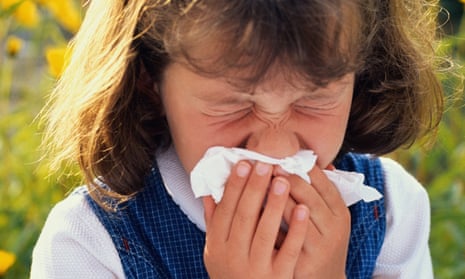Hay fever season is under way in Britain and, thanks to record-breaking warm weather in February, many trees started producing pollen up to three weeks earlier than average.
But if you think it is bad in the UK, try living in Tennessee. With a long growing season and geography that causes air to sit over the region for long periods, the southern state is the hay fever capital of the US.
Now the season is starting earlier and lasting longer. At the start of this month, allergy doctors were kept busy when a yellow haze blanketed much of the south-eastern US, caused by dense clouds of pollen carried on the breeze.
Analysis of US weather data shows the growing season – from the last spring frost to the first autumn frost – has been increasing and is now an average of two weeks longer than it was in 1970.
Meanwhile, about 30% of Americans have hay fever compared with 10% about 40 years ago. If greenhouse gas emissions continue unchecked, scientists estimate the average growing season across most of the US will be a month longer, piling on the misery for hay fever sufferers in Tennessee.

Comments (…)
Sign in or create your Guardian account to join the discussion